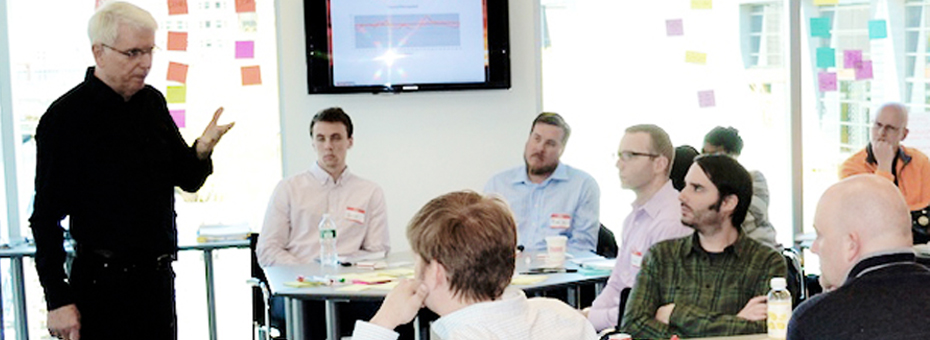Photo courtesy of Scruminc.com
At the fourth annual Lean IT Summit on October 17 in Paris, Jeff Sutherland, co-creator of Scrum, presented a fascinating history of how this methodology for “doing twice the work in half the time” came to be. We learned that Scrum emerged from Japanese research in product development back in the 80s, evolved in the medical research community, and according to Jeff, shares a lineage with Lean principles, and the LPPD (lean product and process development) approach to product development. In a nutshell, Scrum is a set of simple rules and roles that helps a small development team (or group of teams) break a large product idea into small, prioritized chunks, and conduct development learning experiments in rapid “sprint” and release cycles, resulting in something useful to the customer at the end of every cycle. There are frequent “retrospectives” where the team reflects on what can be done to continuously improve the development process, as well as the product itself. Of note, when Jeff teaches Scrum classes, he includes A3 problem solving in the curriculum as a vital element of this continuous improvement process.
You’ll find Jeff’s presentation here:
Scrum: The art of doing twice the work in half the time by Jeff Sutherland
Lean IT Summit 2014 from Institut Lean France
While Scrum has been closely associated with software development for many years, and Jeff is one of the authors of the Agile manifesto, the Scrum approach arose from, and can actually be applied to, any design and development effort. Here are a few questions for readers to ponder: How many of you have heard of Scrum? How many have experimented with it? Have you experienced using Scrum in product development efforts that are not entirely focused on software, but perhaps on the convergence of physical and the digital products? Please share your experiences in the comments so we can learn together.






